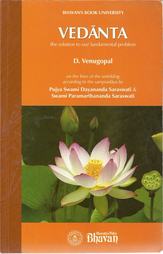7 Summary 2(13,15,16,22,46), 4(9,10,15 to 25,35 to 38,41,42), 6(45 to 47), 18 (62 to 66)
7-1: 2(13,15,16,22,46) Fear of death is common. Death happens when the subtle body leaves the gross body making it insentient. The subtle body has the property to manifest consciousness which the gross body lacks. Sri Krishna says that death is a change of state like a transition from childhood to youth, youth to old age, and from old age to death. After leaving the gross body at the time of death, the subtle body takes up a new gross body according to karmic law. It is rebirth as an infant. This transmigration of the subtle body is blessed by the all-pervasive Atma. In this sense, it is said that as a man discards worn-out clothes and wears new clothes, Atma discards the old body and takes up a new body. Knowing this cycle, a wise person is not deluded. Life is a flow and changes are inherent, such as hot-cold, pleasure-pain. It is a choiceless situation. As such, a person should endure them and need not unnecessarily suffer from agony and mental disturbance. He can then take up the spiritual path, gain knowledge, and be liberated.

